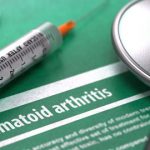WASHINGTON, D.C.—Identifying anticitrullinated protein antibodies (ACPA) as a critical marker of rheumatoid arthritis (RA) was a huge step, but deeper knowledge of how they work is crucial before therapies involving them can be used in the clinic and finely tailored for maximum benefit, a molecular medicine expert in rheumatology said in a session titled, “Prospects for Prevention and Cure of Rheumatoid Arthritis,” here at the 2012 ACR/ARHP Annual Meeting, held November 9–14 in Washington, D.C. [Editor’s Note: This session was recorded and is available via ACR SessionSelect at www.rheumatology.org.]
The Role of ACPA
The picture of ACPA and how it operates is becoming clearer all the time, said Lars Klareskog, MD, PhD, professor in the rheumatology unit and director of the Center for Molecular Medicine at the Karolinska Institute in Stockholm, Sweden. Researchers at his center and elsewhere recently have shed more light on the complexity of ACPA and its different targets, like citrullinated fibrinogen and citrullinated vimentin.
Recent work involving nearly 2,000 RA cases subdivided the disease based on different ACPA specificities and gauged how those subcategories were related to the presence of the shared epitope, HLA-DRB1, a hallmark of severe RA. The odds ratio of having the shared epitope varied widely.1
For those with ACPA specificities for both citrullinated alpha-enolase and vimentin, the likelihood of having the shared epitope was “extremely high,” Dr. Klareskog said. “This means, probably, that there are somewhat different mechanisms involved in driving the B-cell immunity against these different epitopes,” he said.
Dr. Klareskog also noted work that examined the extent to which B cells produce ACPA, which included a finding that in these patients, about 25% of all the CD19+ B cells produced antibodies against citrullinated antigens.2,3
Harnessing these kinds of new insights will require a smarter approach in surveillance and modification of the immune process, he added. Approaches might include using existing, more conventional therapies in very specific contexts and therapies directly aimed at T-cell “tolerization” and at interference with specific antibody functions, he noted.
“We are in a new situation, and then we can begin to use these things,” Dr. Klareskog said. “We are doing these things, of course, in parallel in people with diabetes, with multiple sclerosis, and I would argue that we are in a much better situation with rheumatoid arthritis.”
Early Detection Is Key
V. Michael Holers, MD, professor in the integrated department of immunology at the University of Colorado (UC) in Denver, said that RA is, “in principle, a preventable disease.” By looking at the patterns of biomarkers including ACPA and cytokines linked with imminent onset of the disease, researchers might be able to draw closer to therapies preventing RA, he said.
